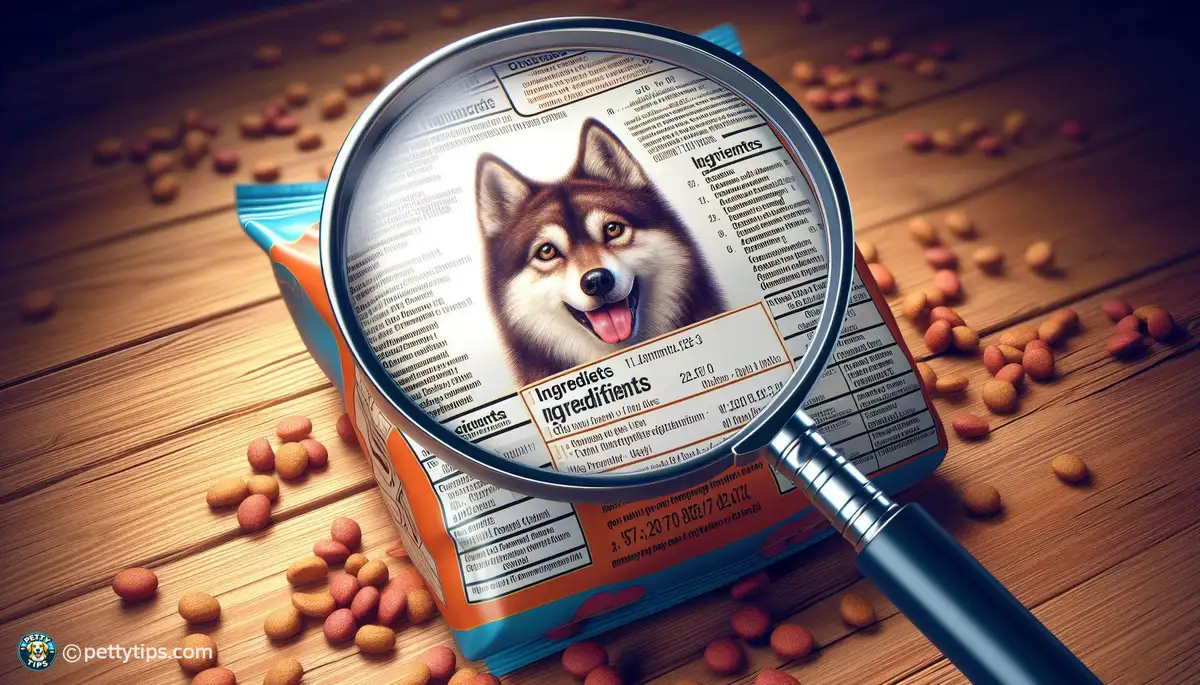- Home
- Pet Nutrition
- Unlocking the Nutritional Code: The Importance of Reading Pet Food Labels
Unlocking the Nutritional Code: The Importance of Reading Pet Food Labels

Decoding the Ingredients List
When you stroll down the pet food aisle, you’re met with a dizzying array of options, each boasting its own set of benefits. But how do you separate the nutritious from the not-so-nutritious? The key lies in the ingredients list. This seemingly mundane section holds the blueprint for what goes into your pet’s body, making it crucial to understand.
Grasping the Guaranteed Analysis
Ever glanced at the back of a pet food bag and seen a string of numbers with words like "crude protein" or "crude fat"? That’s the guaranteed analysis, and it’s more than just random figures. This section provides insight into the minimum and maximum levels of key nutrients, giving you a glimpse into the nutritional profile of the food.
Quality vs. Quantity
Prioritizing Whole Ingredients
When it comes to pet food, quality should always trump quantity. Look for labels that feature whole ingredients like real meat, vegetables, and grains. These ingredients provide essential nutrients in their purest form, ensuring your furry friend receives a well-rounded diet.
Beware of Fillers and By-Products
Not all ingredients are created equal. Fillers like corn, wheat, and soy may bulk up the food but offer little nutritional value. Similarly, by-products, such as animal organs and beaks, may lack the same quality as whole meats. Opting for foods free of fillers and by-products ensures your pet gets the nutrients they need without unnecessary additives.
Unveiling Sneaky Marketing Tactics
The Truth Behind Buzzwords
Labels adorned with phrases like "natural," "holistic," and "premium" may catch your eye, but don’t be fooled by marketing jargon. While these terms imply superior quality, they’re often used as clever marketing tactics rather than indicators of nutritional excellence. Always delve deeper into the ingredients list to uncover the real story behind the buzzwords.
Spotting Misleading Imagery
Ever noticed those picturesque images of succulent meats and fresh vegetables adorning pet food packaging? While visually appealing, these images can be misleading. Don’t judge a book by its cover—take a closer look at the ingredients list to ensure the contents live up to the imagery.
Catering to Your Pet's Unique Needs
Understanding Life Stage Requirements
Pets have different nutritional needs depending on their life stage. A growing kitten requires different nutrients than a senior cat, just as a playful puppy differs from an aging dog. Choose pet foods tailored to your furry friend’s specific life stage to ensure they receive the appropriate balance of nutrients.
Addressing Special Dietary Considerations
Just like humans, pets may have special dietary considerations. Whether it’s food sensitivities, allergies, or health conditions, selecting the right pet food can make a world of difference. Look for specialized formulas designed to address your pet’s unique needs, whether it’s grain-free options or formulas rich in omega-3 fatty acids.
Navigating Label Regulations
Understanding Labeling Requirements
Did you know that pet food labeling is regulated by the Association of American Feed Control Officials (AAFCO)? These regulations set standards for ingredient listing, nutrient profiles, and feeding guidelines. Familiarize yourself with AAFCO requirements to make informed choices about your pet’s nutrition.
Unveiling the Fine Print
Don’t overlook the fine print on pet food labels—it often holds valuable information. From feeding guidelines to contact information for the manufacturer, these details can provide insights into the quality and transparency of the brand. Take the time to read the fine print to ensure you’re making the best choice for your pet.
Making Informed Decisions
Consulting with Your Veterinarian
Your veterinarian is your best ally when it comes to your pet’s nutrition. They can offer personalized recommendations based on your pet’s health history, dietary needs, and lifestyle. Don’t hesitate to seek their guidance when choosing the right pet food for your furry companion.
Researching Brands and Reviews
With so many pet food brands vying for your attention, it pays to do your homework. Research brands, read reviews, and seek recommendations from fellow pet owners to narrow down your options. By arming yourself with knowledge, you can make informed decisions that prioritize your pet’s health and well-being.
In conclusion, reading pet food labels isn’t just a suggestion—it’s a necessity. By understanding ingredients, decoding nutritional information, and navigating marketing tactics, you can ensure your furry friend receives the nourishment they need to thrive. So, the next time you reach for that bag of pet food, remember: knowledge is power, and it starts with reading the label.
